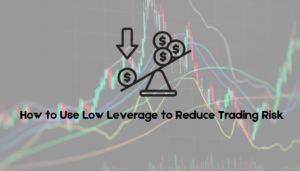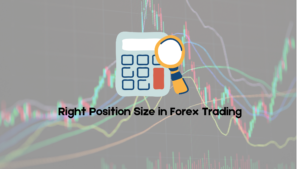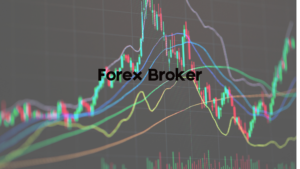Forex trading, also known as foreign exchange trading, involves the exchange of currencies on the global market. This market is the largest and most liquid financial market in the world, with a daily trading volume exceeding $6 trillion. The primary purpose of forex trading is to allow individuals, businesses, and financial institutions to convert one currency into another, facilitating international trade and investment. Additionally, traders in the forex market seek to profit from fluctuations in currency exchange rates, speculating on whether a currency will rise or fall in value relative to another currency.
The forex market operates 24 hours a day, five days a week, across major financial centers around the world, including London, New York, Tokyo, and Sydney. This continuous trading schedule allows traders to respond to news and economic developments in real time, providing numerous opportunities for profit. Unlike stock markets, which are centralized and operate through specific exchanges, the forex market is decentralized and conducted over-the-counter (OTC). This means that forex trading is carried out electronically via networks of banks, brokers, and financial institutions. Forex trading involves pairs of currencies, such as EUR/USD (Euro/US Dollar), where the first currency is known as the base currency and the second as the quote currency.
When trading forex, traders speculate on the value of the base currency relative to the quoted currency. For instance, if a trader believes that the Euro will appreciate against the US Dollar, they would buy the EUR/USD pair. Conversely, if they believe the Euro will depreciate, they would sell the EUR/USD pair. The price of a currency pair is influenced by a multitude of factors, including economic indicators, interest rates, political stability, and market sentiment. Understanding these factors and analyzing market trends are essential skills for successful forex trading.
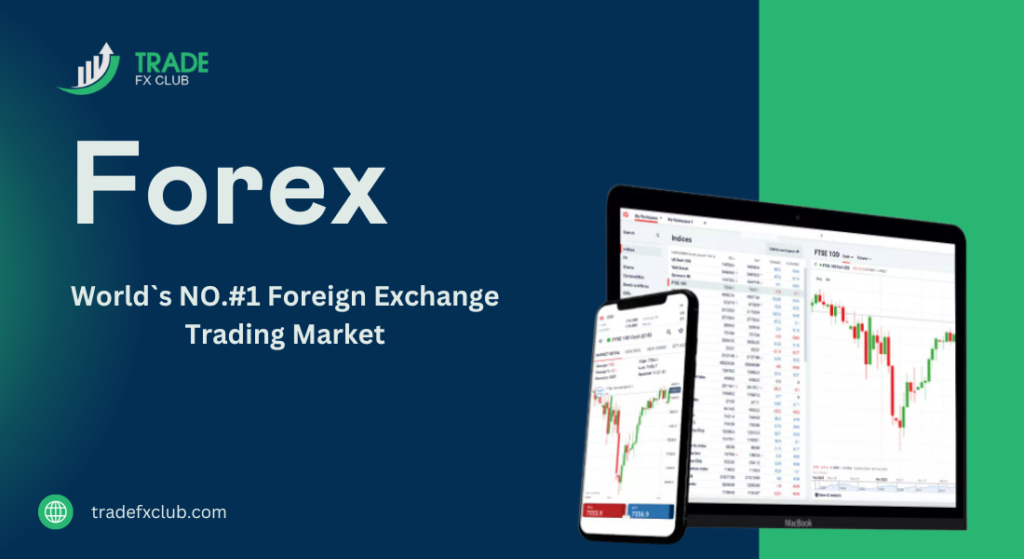
How Does the Forex Market Work?
The forex market operates through a decentralized global network of banks, financial institutions, brokers, and individual traders, without a central exchange. This over-the-counter (OTC) structure allows trading to occur directly between parties, facilitated by electronic trading platforms and brokerages. The market is open 24 hours a day, five days a week, enabling continuous trading and high liquidity. This non-stop trading is possible because it spans across different time zones, starting in Sydney and moving through Tokyo, London, and New York.
In forex trading, currencies are traded in pairs, such as EUR/USD (Euro/US Dollar), where the first currency is the base currency and the second is the quote currency. The price of a currency pair, also known as the exchange rate, indicates how much of the quoted currency is needed to purchase one unit of the base currency. Traders speculate on the price movements of these pairs, buying a pair if they believe the base currency will strengthen against the quoted currency, or selling it if they believe the opposite. The forex market is highly influenced by macroeconomic factors, including interest rates, inflation rates, and political stability, as well as technical factors like market trends and patterns.
A key feature of the forex market is leverage, which allows traders to control larger positions with a smaller amount of capital. For example, with a leverage ratio of 50:1, a trader can control $50,000 with just $1,000 of their own money. While leverage can amplify profits, it also increases the potential for significant losses, making risk management essential. Additionally, forex brokers provide various tools and platforms for trading, including real-time charts, technical analysis tools, and news feeds, helping traders make informed decisions. The combination of high liquidity, leverage, and advanced trading tools makes the forex market an attractive environment for both novice and experienced traders.
What are the Major Forex currency Pairs?
The forex market is dominated by several major currency pairs, which involve the most widely traded currencies from the world’s largest economies. These major pairs typically offer the highest liquidity, tighter spreads, and the most stable price movements, making them popular among traders. The primary major currency pairs include EUR/USD (Euro/US Dollar), GBP/USD (British Pound/US Dollar), USD/JPY (US Dollar/Japanese Yen), and USD/CHF (US Dollar/Swiss Franc).
EUR/USD is the most traded currency pair in the forex market, representing the two largest economies: the Eurozone and the United States. This pair is known for its high liquidity and relatively low volatility, making it a favourite among traders. The pair’s price movements are influenced by economic indicators from both regions, such as GDP growth, interest rate decisions, and political events. GBP/USD, often referred to as “Cable,” is another major pair with significant trading volume. It represents the British Pound against the US Dollar and is known for its higher volatility compared to EUR/USD, offering opportunities for substantial gains but also posing higher risks.
USD/JPY and USD/CHF are also crucial pairs in the forex market. USD/JPY, which pits the US Dollar against the Japanese Yen, is heavily influenced by economic policies and market sentiment in both the US and Japan. This pair is often traded by those looking to exploit interest rate differentials and is sensitive to geopolitical events in Asia. USD/CHF, representing the US Dollar against the Swiss Franc, is considered a safe-haven pair. The Swiss Franc is often sought during times of global economic uncertainty due to Switzerland’s strong financial system and political stability. Traders use this pair to hedge against market volatility and economic instability, making it a key player in the forex market.
How to Choose a Forex Broker?
Selecting the right forex broker is a crucial step for any trader, as it significantly impacts the trading experience and potential for success. To choose a suitable forex broker, several factors need to be considered, including regulatory compliance, trading platforms, fees, and customer support. Ensuring that the broker is regulated by a reputable financial authority, such as the Financial Conduct Authority (FCA) in the UK, the Commodity Futures Trading Commission (CFTC) in the US, or the Australian Securities and Investments Commission (ASIC), is essential for safeguarding your investments and ensuring fair trading practices.
The trading platform provided by the broker is another critical aspect to consider. A reliable and user-friendly platform, such as MetaTrader 4 (MT4) or MetaTrader 5 (MT5), can enhance your trading experience by offering advanced charting tools, technical indicators, and automated trading capabilities. Additionally, check if the broker offers mobile trading apps, allowing you to manage your trades on the go. It’s also important to evaluate the broker’s fees and spreads. Look for a broker that offers competitive spreads and transparent fee structures, avoiding those with hidden charges or unusually high commissions that could erode your profits.
Customer support and educational resources are also vital when choosing a forex broker. A broker with responsive and knowledgeable customer service can provide timely assistance and resolve issues efficiently, which is crucial in the fast-paced forex market. Moreover, educational resources, such as webinars, tutorials, and market analysis, can help you improve your trading skills and stay informed about market trends. Some brokers also offer demo accounts, allowing you to practice trading with virtual money before committing real funds. By considering these factors, you can select a forex broker that meets your needs and supports your trading goals.
What Steps are Required to Start Forex Trading?
Starting forex trading involves a series of essential steps that ensure you are prepared and equipped to navigate the forex market effectively. The first step is to gain a solid understanding of the forex market, its terminologies, and its mechanics. This involves studying how currency pairs work, what factors influence exchange rates, and the basics of technical and fundamental analysis. Numerous online resources, courses, and books can provide the foundational knowledge needed to grasp the intricacies of forex trading.
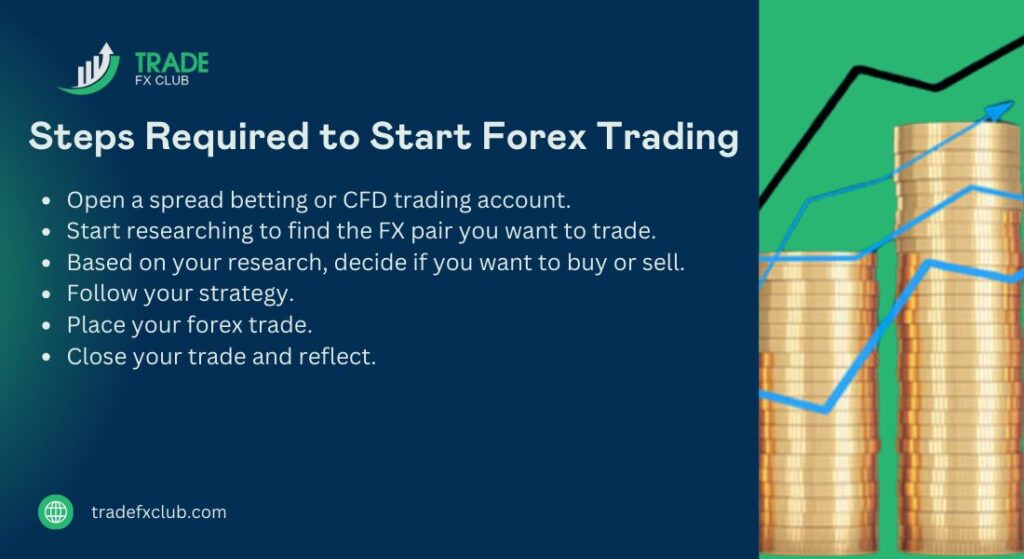
Once you have a basic understanding, the next step is to choose a reliable forex broker. This involves researching and comparing different brokers based on factors such as regulatory compliance, trading platforms, fees, and customer support. It’s crucial to select a broker that offers a user-friendly trading platform, competitive spreads, and robust customer service. Additionally, ensure the broker is regulated by a reputable financial authority to protect your investments and ensure fair trading practices. Opening a demo account with your chosen broker is highly recommended. This allows you to practice trading with virtual funds, gaining practical experience without risking real money.
The final step is to develop a trading plan and strategy. A well-defined trading plan outlines your financial goals, risk tolerance, and the strategies you will use to make trading decisions. This includes setting entry and exit points, determining the amount of capital to risk per trade, and employing risk management techniques such as stop-loss orders. It’s also important to keep a trading journal to document your trades, strategies, and outcomes, which helps in analyzing performance and making necessary adjustments. Continuous learning and adapting to market changes are essential for long-term success in forex trading. By following these steps, you can build a strong foundation and increase your chances of becoming a successful forex trader.
How to Perform Technical Analysis in Forex?
Performing technical analysis in Forex involves studying historical price data and using various tools to forecast future price movements. The first step is to familiarize yourself with price charts and understand the different types available, such as line charts, bar charts, and candlestick charts. Candlestick charts, for instance, offer detailed insights into market sentiment through patterns formed by the price action, including doji, hammer, and engulfing patterns. By analyzing these patterns, traders can gauge market trends and potential reversals.
Once you’re comfortable with chart types, the next step is to apply technical indicators and tools. Indicators like moving averages, Relative Strength Index (RSI), and Bollinger Bands help identify trends, overbought or oversold conditions, and price volatility. Moving averages smooth out price data to reveal trends over specific periods, while RSI and other momentum indicators can signal potential reversal points. Additionally, Fibonacci retracement levels and trendlines assist in identifying potential support and resistance levels, providing insight into where the price may change direction.
Effective technical analysis also involves recognizing and interpreting chart patterns such as head and shoulders, double tops/bottoms, and triangles. These patterns can signal trend continuation or reversal and are crucial for making informed trading decisions. Combining chart patterns with indicator signals and understanding the broader market context will help create a comprehensive analysis framework. Regular practice and continuous learning are essential to refine technical analysis skills and adapt to changing market conditions.
What are the Common Forex Trading Strategies?
Common Forex trading strategies include trend following, range trading, and scalping, each suited to different market conditions and trader preferences. Trend following strategies focus on identifying and trading in the direction of the current market trend. Traders using this approach rely on indicators such as moving averages and trendlines to confirm the trend and enter trades. By riding the trend and adjusting stop-loss orders to lock in profits, traders aim to capitalize on sustained price movements. This strategy works best in strongly trending markets and requires patience and discipline to avoid getting caught in counter-trend moves.
Range trading involves identifying horizontal price levels where the currency pair is fluctuating between support and resistance zones. Traders buy near the support level and sell near the resistance level, profiting from the price’s movement within the range. To enhance accuracy, traders use oscillators like the Relative Strength Index (RSI) to gauge overbought and oversold conditions, helping to predict potential reversals within the range. This strategy is effective in non-trending or sideways markets and requires careful monitoring to avoid breakout situations where the price moves beyond the established range.
Scalping is a strategy focused on making small, frequent trades to capture minor price movements. Scalpers aim to profit from small price changes over short time frames, often using high leverage and tight stop-loss orders to manage risk. This approach requires a high level of concentration and quick decision-making, as trades are held for just minutes or even seconds. Scalping can be effective in liquid markets where transaction costs are low, but it demands a robust trading plan and disciplined execution to be successful.
How to Develop an Effective Forex Trading Strategy?
Developing an effective Forex trading strategy involves a systematic approach that combines market analysis, risk management, and consistent evaluation. The first step is to define your trading goals and style, considering factors like risk tolerance, time commitment, and financial objectives. Choose a trading approach—whether trend following, range trading, or another method—that aligns with your preferences and the current market conditions. Utilize both fundamental and technical analysis to identify potential trading opportunities, and select appropriate indicators and tools to support your strategy.
The next crucial step is to establish clear entry and exit rules, as well as risk management practices. Define criteria for entering and exiting trades, such as specific technical indicators or chart patterns, to ensure consistency and avoid emotional decision-making. Implement stop-loss and take-profit orders to manage risk and protect your capital. Additionally, back test your strategy using historical data to assess its performance and make any necessary adjustments. Regularly review and refine your strategy based on trading results and changing market conditions to maintain its effectiveness over time.
What are the Risks and Rewards of a Forex Trading Career?
A career in Forex trading offers both significant rewards and inherent risks, making it crucial for traders to carefully weigh these factors. On the reward side, successful Forex traders can achieve substantial financial gains due to the market’s high liquidity and leverage opportunities. The ability to trade 24 hours a day, five days a week, offers flexibility and numerous trading opportunities. Additionally, skilled traders have the potential to achieve high returns on their investments, especially with well-researched strategies and disciplined execution.
However, the risks associated with Forex trading can be substantial. The market’s high volatility and leverage can lead to significant financial losses if not managed properly. Traders are exposed to risks such as market risk, where unexpected news or events can cause rapid price fluctuations, and liquidity risk, where it might be difficult to execute trades at desired prices. Moreover, emotional and psychological pressures can impact decision-making, leading to impulsive trades and potential losses. Effective risk management strategies, including setting stop-loss orders and maintaining a disciplined approach, are essential to mitigate these risks.
Balancing the potential rewards with the risks involves continuous learning and adaptation. Successful Forex traders invest time in developing and refining their trading strategies, staying informed about market developments, and managing their capital effectively. While the potential for high returns is a significant draw, it’s essential to approach Forex trading with a realistic understanding of its challenges and to be prepared for both the ups and downs inherent in the profession.
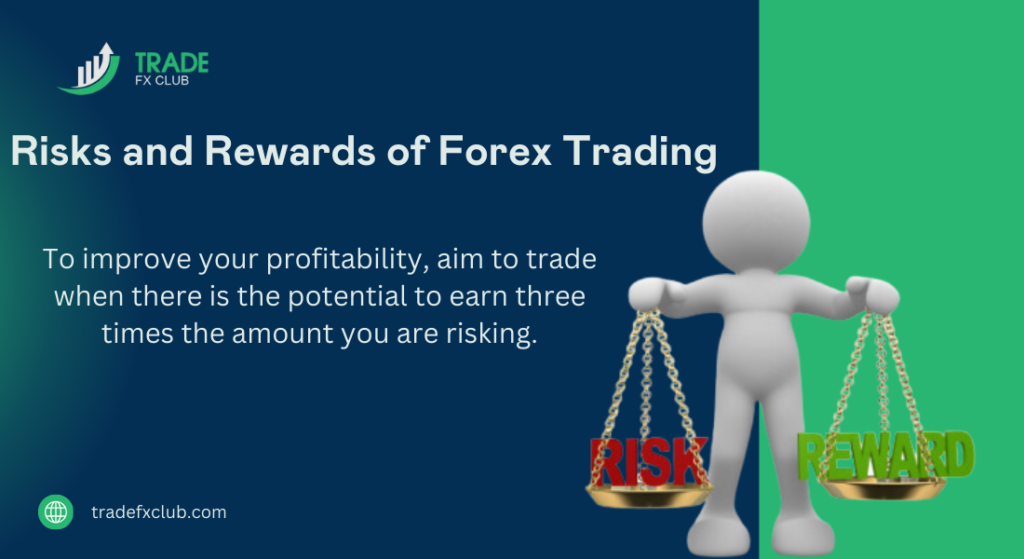
How to Manage Money and Risk in Forex Trading?
Managing money and risk in Forex trading is crucial to maintaining long-term profitability and protecting your capital. The first step in effective risk management is to determine your risk tolerance and establish clear guidelines for how much of your capital you are willing to risk on each trade. A common rule is to risk no more than 1-2% of your total trading capital on a single trade. This approach helps ensure that a series of losing trades does not deplete your account significantly and provides room for recovery and continued trading.
Another key aspect of risk management is setting stop-loss and take-profit orders. A stop-loss order automatically closes a trade when the price reaches a predetermined level, limiting potential losses. Similarly, a take-profit order locks in profits by closing a trade when the price reaches a specified target. By using these tools, traders can manage their trades more effectively and reduce the impact of adverse market movements. It’s also important to adjust stop-loss levels as a trade becomes profitable, a technique known as trailing stops, which helps protect gains while allowing for further upside potential.
Diversification and leverage management are additional elements of effective risk management. Diversifying your trades across different currency pairs can help spread risk and reduce the impact of a single trade’s adverse outcome on your overall portfolio. Additionally, managing leverage carefully is vital; while leverage can amplify profits, it also magnifies losses. Using lower leverage levels ensures that a single trade does not jeopardize your entire account and allows for more controlled and deliberate trading decisions. Combining these strategies helps create a balanced approach to managing both money and risk in Forex trading.
What Tools and Platforms are Essential for Forex Trading?
Essential tools and platforms for Forex trading include trading platforms, analytical tools, and economic calendars. Trading platforms Meta Trader 4 (MT4) and Meta Trader 5 (MT5) are popular among traders for their comprehensive features, including real-time price quotes, advanced charting tools, and a wide range of technical indicators. These platforms also support automated trading through Expert Advisors (EAs), allowing traders to implement and test trading strategies without constant manual intervention. Choosing a reliable trading platform that offers robust security, user-friendly interface, and compatibility with your trading style is crucial for efficient trading.
Analytical tools play a significant role in making informed trading decisions. Technical analysis tools, such as charting software and technical indicators (e.g., moving averages, RSI, MACD), help traders analyze price patterns and market trends. Fundamental analysis tools, including access to economic reports and news feeds, provide insights into market-moving events and economic conditions. Additionally, economic calendars track important economic releases and events that can impact currency prices. Staying updated with these tools helps traders anticipate market movements and adapt their strategies accordingly.
Finally, Risk management tools like calculators for position sizing and risk-to-reward ratios are essential for maintaining effective risk management. Many trading platforms include built-in calculators, but external tools and apps can offer more customization and detailed analysis. Utilizing these tools ensures that traders can manage their risk exposure and make well-informed trading decisions. Together, these tools and platforms form the backbone of a successful Forex trading strategy, enhancing both analysis and execution capabilities.
What is the Impact of Global Events on Forex Markets?
Global events have a profound impact on Forex markets, as they influence currency values and trading behavior . Economic data releases, such as GDP figures, employment reports, and inflation data, can significantly affect currency markets. Positive economic news often leads to currency appreciation as investors gain confidence in a country’s economic stability, while negative news can lead to depreciation. For example, stronger-than-expected employment data in the U.S. might boost the value of the U.S. dollar, as it suggests a robust economy and potential interest rate hikes by the Federal Reserve.
Political events and geopolitical tensions also play a crucial role in shaping Forex market dynamics. Elections, trade negotiations, and geopolitical conflicts can introduce uncertainty and volatility into the market. For instance, political instability or unexpected election results may lead to currency depreciation as investors seek safer assets, such as the U.S. dollar or gold. Conversely, trade agreements or geopolitical stability might boost investor confidence and strengthen the relevant currencies. The market’s reaction to these events is often swift and can lead to significant price movements, making it essential for traders to stay informed and adaptable to global developments.
How to Stay Updated with Forex News and Trends?
Staying updated with Forex news and trends is crucial for making informed trading decisions and adapting to market changes. One effective way to stay informed is by following reputable financial news sources and economic calendars. Websites such as Bloomberg, Reuters, and CNBC provide real-time news updates and in-depth analysis of global economic events that impact currency markets. Economic calendars, available on financial news sites and trading platforms, track key economic releases and events, such as central bank meetings, economic indicators, and geopolitical developments, allowing traders to anticipate market-moving events and adjust their strategies accordingly.
Another valuable approach is to use trading platforms and tools that integrate news feeds and market analysis. Many Forex trading platforms offer built-in news services and technical analysis tools that provide insights into current market conditions and trends. Subscribing to market analysis reports and newsletters from expert analysts can also offer a deeper understanding of market trends and potential trading opportunities. Additionally, participating in online trading communities and forums allows traders to share insights, discuss strategies, and stay updated on the latest market developments from a network of peers and professionals. Combining these resources helps traders maintain a comprehensive view of the Forex market and make well-informed trading decisions.
In conclusion, effectively staying updated with Forex news and trends is fundamental to successful trading. By utilizing reputable financial news sources, economic calendars, and integrated trading platforms, traders can stay ahead of market-moving events and adjust their strategies accordingly. These tools provide timely insights into economic data, geopolitical developments, and other factors that influence currency markets. Engaging with expert analysis and participating in trading communities further enriches a trader’s perspective, enabling more informed decision-making and strategic planning.
Furthermore, a proactive approach to monitoring market trends and news allows traders to manage risks more effectively and seize emerging opportunities. As the Forex market is highly sensitive to global events and economic shifts, continuous learning from Education Platforms and adaptation are crucial for maintaining a competitive edge. By combining various resources and remaining vigilant about market changes, traders can enhance their trading performance, navigate volatility with greater confidence, and achieve long-term success in the Forex market.

